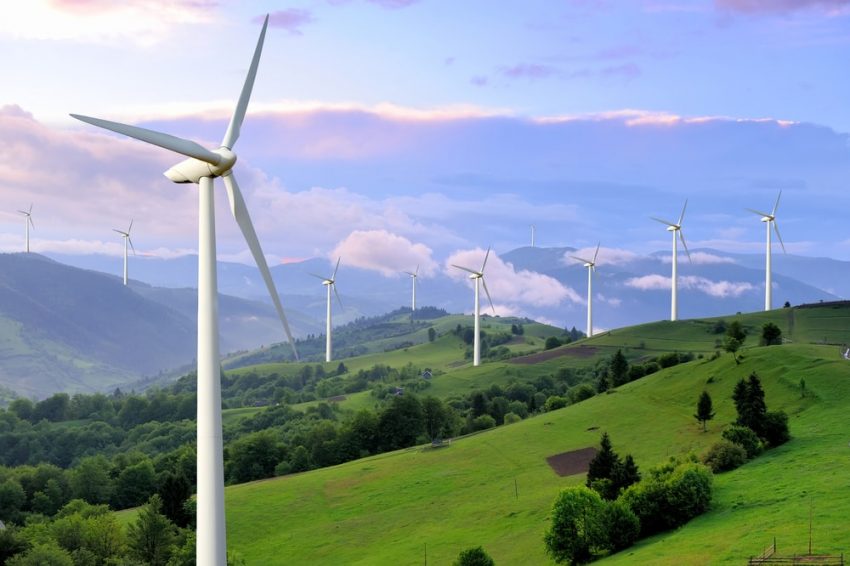By Energy we commonly refer to a set of concepts related to the idea of what is capable of generating a quantity of movement, work or a transformation in matter.
In this, physics, technology and economics go hand in hand, since they conceive energy as a necessary resource to effect a change in the perceptible conditions of the reality around us.
Laenergía has an important presence in our daily life: it allows us to cook our food, keep our house warm in winter and cool in summer, illuminate dark spaces and move faster in our cars.
In fact, it is so integrated into our daily lives that we often take it for granted. Our own bodies they contain a significant charge of chemical, electrical and other types of energy, without which we could not carry out the work of being alive and existing as we do.
We often make the mistake of calling Energy only to electricity, but there are numerous types of energy around us daily:
| Potential energy | Mechanical energy |
| Hydroelectric power | Internal energy |
| Electric power | Thermal energy |
| Chemical energy | Solar energy |
| Wind power | Nuclear energy |
| Kinetic energy | Sound energy |
| Caloric energy | Hydraulic energy |
| Geothermal energy | |
Examples of energy in everyday life

- Caloric energy. To make the gnocchi that we will eat for lunch we require a heat source that we can transmit to the water to make it boil.
- Electric power. To start the electrical appliances in our homes we require electric power, usually coming from the national laying or wiring, but also, in remote or rural cases, from internal combustion generators.
- Thermal energy. Thermal energy allows us to store food in the refrigerator and keep it at a uniform and low temperature, delaying the effects of its decomposition.
- Chemical energy. Automobiles require fuel and electricity to function, and both obtain them from chemical reactions: electricity is obtained from the internal reaction of the battery, and the push from the controlled explosion of fuel in the presence of a spark. This chemical energy makes it possible to produce electrical energy (the battery) and mechanical energy (in the motor).
- Radioelectric energy. Most remote controls for television or audio equipment operate using electromagnetic waves that the unit receives from a distance, similar to those of a radio.

- Magnetic energy. The magnets attached to our refrigerator with notes, drawings or decorative messages, do so due to their magnetic properties, which encourage them to adhere to certain metals with iron content.
- Mechanical energy. When we use a grinder to grind the peppercorns inside and season our food, we are forcibly printing a movement to a piece that in turn moves a small gear, which finally transforms the pepper into powder.
- Solar energy. In many first world homes, photovoltaic cells are used that convert the energy from the sun into usable energy of an electrical type, with which to keep the house running at night.
- Biochemical energy. When we eat food we are replenishing our reserves of organic matter with which to feed our metabolism. If we don’t, we won’t have energy, since the sugars in food are the biochemical fuel for the process of cellular respiration, essential for our vital functions.
- Static energy. The call static electricity It is a form of energy that can be generated when we rub certain fabrics together, such as when taking clothes out of the dryer. This energy makes the garments remain attached to each other, and can even be discharged with a micro-spark when it is transmitted to our body. We can also see it on the screen of old televisions when they are turned on, or in the hair of the head when combing them (frizz).

- Gravitational energy. The Earth’s force of gravity is a form of energy perceptible every day by everyone. It is enough to lift an object and drop it in the air, to see it fall prey to that energy, the same energy that acts on the liquids that we pour from a jug, allowing us to serve them.
- Nuclear energy. It is perhaps more difficult to see, since it takes place at molecular levels, but nuclear energy is what allows certain very explosive reactions, such as in nuclear reactors (controlled) or atomic bombs (uncontrolled or chain reaction).
- Elastic energy. We witness it when we push a spring and we see it recover its original size and position, for example, in the buttons of some devices and in certain toys, such as the famous Slinky.
- Kinetic energy. The energy of movement, it is possible to perceive it every time a car moves, every time we push a piece of furniture from one place to another, or even in our body when walking.
- Wind power. This is the name given to the energy of the wind, so it is possible to verify it just by turning on a fan. However, this name is usually used to refer to the electrical energy produced by mechanisms (wind plants) that take advantage of the force of the wind, following the same principle as the mills.

